Cassini Probe Plunges Into Saturn, Ending A Twenty Year Mission Of Discovery
Ending a mission that began when it was launched nearly twenty years ago, the Cassini probe was sent into Saturn's atmosphere to perform one final task.
Nearly twenty years ago, in October 1997, the Cassini-Huygens probe was launched from Kennedy Space Center on a mission that would take it to Saturn, which had last been visited for an extended period of time by an unmanned mission from Earth since Voyager 2 conducted its flyby mission in 1981. On the way, the probe made flybys of both Venus, Earth, and Jupiter as part of a long journey that was designed to give the probe sufficient momentum to make the 746 million mile journey from Earth to the Solar System’s sixth planet. Along the way, the probe proved crucial in providing data that ending up proving Einstein’s General Theory of Relativity as well as data regarding each of the planets it flew by as it made its way to its destination with the exception of Mars, which was not in a portion of its orbit around the sun to be examined at the time Cassini was in the area. The probe finally arrived in the Saturnian system on May 18, 2004, nearly seven years after it had been launched. Over the next thirteen years, the probe made a countless number of discoveries and observations regarding Saturn itself, its moons, and its iconic rings, which have been a source of wonder for humans from the first time that they were first seen and documented by Galileo Galilei in 1610.
Today, after thirteen years on the job and a journey that began when Bill Clinton was still President of the United States, the Cassini probe performed its final task by falling into the ringed planet’s dense atmosphere, continuing to send data along the way until it could no longer be heard from:
PASADENA, Calif. — NASA’s Cassini spacecraft, the intrepid robotic explorer of Saturn’s magnificent beauty, ended a journey of 20 years on Friday like a shooting star streaking across Saturn’s sky.
By design, the probe vanished into Saturn’s atmosphere, disintegrating moments after its final signal slipped away into the background noise of the solar system. Until the end, new measurements streamed one billion miles back to Earth, preceded by the spacecraft’s last picture show of dazzling sights from around our sun’s sixth planet.
“The signal from the spacecraft is gone and, within the next 45 seconds, so will be the spacecraft,” Earl Maize, the program manager, announced in the control room at NASA’s Jet Propulsion Laboratory here, just after 4:55 a.m. local time.
His eyes teared and his voice wavered as he said, “I am going to call this the end of mission.” During a news conference later, he said, “To the very end, the spacecraft did everything we asked.”
The team members, some of whom had spent decades on the mission, started hugging each other when news of the spacecraft’s demise arrived.
Never again would Cassini send home the images and data that inspired discoveries wonder during the probe’s 13 years in orbit around the ringed planet.
“For me, there’s a core of sadness, in part in thinking of the breakup of the Cassini family,” said Linda Spilker, Cassini project scientist. “But it’s both an end and a beginning as these people go off and work on other things.”
The mission for Cassini, in orbit since 2004, stretched far beyond the original four-year plan, sending back multitudes of striking photographs, solving some mysteries and upending prevailing notions about the solar system with completely unexpected discoveries.
“Cassini is really one of those quintessential missions from NASA,” said Thomas H. Zurbuchen, NASA’s associate administrator for science. “It hasn’t just changed what we know about Saturn, but how we think about the world.”
Its end closes the chapter on the exploration of Saturn for probably a decade or longer. Still, there is much left for scientists to study and decipher.
After the official end of the mission, the Jet Propulsion Lab, which manages NASA’s unmanned missions, released a statement:
A thrilling epoch in the exploration of our solar system came to a close today, as NASA’s Cassini spacecraft made a fateful plunge into the atmosphere of Saturn, ending its 13-year tour of the ringed planet.
“This is the final chapter of an amazing mission, but it’s also a new beginning,” said Thomas Zurbuchen, associate administrator for NASA’s Science Mission Directorate at NASA Headquarters in Washington. “Cassini’s discovery of ocean worlds at Titan and Enceladus changed everything, shaking our views to the core about surprising places to search for potential life beyond Earth.”
Telemetry received during the plunge indicates that, as expected, Cassini entered Saturn’s atmosphere with its thrusters firing to maintain stability, as it sent back a unique final set of science observations. Loss of contact with the Cassini spacecraft occurred at 4:55 a.m. PDT (7:55 a.m. EDT), with the signal received by NASA’s Deep Space Network antenna complex in Canberra, Australia.
“It’s a bittersweet, but fond, farewell to a mission that leaves behind an incredible wealth of discoveries that have changed our view of Saturn and our solar system, and will continue to shape future missions and research,” said Michael Watkins, director of NASA’s Jet Propulsion Laboratory in Pasadena, California, which manages the Cassini mission for the agency. JPL also designed, developed and assembled the spacecraft.
Cassini’s plunge brings to a close a series of 22 weekly “Grand Finale” dives between Saturn and its rings, a feat never before attempted by any spacecraft.
“The Cassini operations team did an absolutely stellar job guiding the spacecraft to its noble end,” said Earl Maize, Cassini project manager at JPL. “From designing the trajectory seven years ago, to navigating through the 22 nail-biting plunges between Saturn and its rings, this is a crack shot group of scientists and engineers that scripted a fitting end to a great mission. What a way to go. Truly a blaze of glory.”
As planned, data from eight of Cassini’s science instruments was beamed back to Earth. Mission scientists will examine the spacecraft’s final observations in the coming weeks for new insights about Saturn, including hints about the planet’s formation and evolution, and processes occurring in its atmosphere.
“Things never will be quite the same for those of us on the Cassini team now that the spacecraft is no longer flying,” said Linda Spilker, Cassini project scientist at JPL. “But, we take comfort knowing that every time we look up at Saturn in the night sky, part of Cassini will be there, too.”
Cassini launched in 1997 from Cape Canaveral Air Force Station in Florida and arrived at Saturn in 2004. NASA extended its mission twice – first for two years, and then for seven more. The second mission extension provided dozens of flybys of the planet’s icy moons, using the spacecraft’s remaining rocket propellant along the way. Cassini finished its tour of the Saturn system with its Grand Finale, capped by Friday’s intentional plunge into the planet to ensure Saturn’s moons – particularly Enceladus, with its subsurface ocean and signs of hydrothermal activity – remain pristine for future exploration.
While the Cassini spacecraft is gone, its enormous collection of data about Saturn – the giant planet, its magnetosphere, rings and moons – will continue to yield new discoveries for decades to come.
“Cassini may be gone, but its scientific bounty will keep us occupied for many years,” Spilker said. “We’ve only scratched the surface of what we can learn from the mountain of data it has sent back over its lifetime.”
I’ll leave it to those better educated and informed than I to comment on Cassini’s contribution to our understanding of Saturn, its rings, and its moons, along with the other locations in the Solar System that it flyby on its seven-year journey to get to Saturn. Suffice it to say, though, that those contributions have obviously been immense and the data that we have received from the probe over its thirteen years of service have increased our knowledge of one of the most distant, beautiful, and mysterious planets in our Solar System. Even though that mission is now at an end, and Cassini itself has most likely been vaporized by the temperatures and pressures in the atmosphere of the gas giant has been studying for so long, the probe remained reliable to the end, keeping itself aligned with Earth so that data would be received as long as it could before its thrusters proved to be inadequate. Then, just before eight this morning on the East Coast of the United States, the last bit of data was received from Cassini, and a mission that had been in the planning stages since shortly after Voyager 2 passed by the planet in 1981 came to an end.
Thanks to its rings, which were once believed to be unique until visits to the other gas and ice giants — Jupiter, Neptune, and Uranus — and more refined telescopes revealed ring systems around these planets as well, Saturn has been a planet that has seemingly fascinated humanity ever since Galileo first discovered it some four hundred seven years ago. With the dawn of space exploration, it has been the subject three other missions, Pioneer 11, Voyager 1, and Voyager 2. Those missions, however, were flyby missions that lasted for only a brief period of time as those probes made their way through the Solar System. Cassini, though, was the first mission that was specifically designed to enter the orbit of the fifth planet for the purpose of conducting long-term studies. As noted, the mission proved to be so successful and ground-breaking that NASA and JPL decided to extend the mission on two separate occasions. Had they not done so, the probe would have been sent on its final mission into Saturn’s atmosphere years earlier. Those extensions proved to be wise decisions since the probe remained functional and reliable for the entirety of its thirteen-year mission at the ringed planet and sent home a treasure trove of data that scientists will be interpreting for years to come.
Andrew Malcom, who is a far better writer than I’ll ever be, puts it best:
On Feb. 14, 1779, Capt. James Cook, the British explorer, was captured and, uh, cooked by Hawaiian natives. Perhaps not since then has there been such a fiery demise as this morning’s flaming end to the historic space explorer Cassini.
The death of Cassini (Giovanni Domenico Cassini was an Italian mathematician and astronomer, 1625-1711) was actually a radioed suicide command. Twenty years after a fiery launch and 13 years after arriving to peer around the magical planet of Saturn and its many moons, Cassini was running low on maneuvering fuel.
(…)
In 2005, Cassini successfully dropped off the European Space Agency’s Huygens lander to explore Titan, a giant Saturn moon harboring a sea of liquid methane. Cassini found new rings on Saturn. It discovered that the icy crust of another moon, Enceladus, actually covers a vast underground ocean of water, a key ingredient for life as we know it.
Not only that, but for some reason huge plumes of moisture invisible from Earth spew from cracks in that ice some 50 miles out into space. Mysteriously, those high-pressure jets of water carry grains of sand. You can bet future spacecraft will be tasked to visit those fissures.
Engineers who’ve spent much of their professional life guiding, maintaining and talking with Cassini gathered in JPL’s campus-like Pasadena headquarters during the night for a kind of space wake. From 7 a.m. to 8:30 Eastern time NASA-TV’s cable channel carried a live video feed of Mission Control. And a post-mission news conference was scheduled for broadcast from there at 9:30 a.m. Eastern.
The obedient little machine sent home data to the very end, revealing possible secrets of Saturn’s atmosphere. With their last waning bursts, Cassini’s navigational thrusters struggled ever harder against the craft’s buffeting to keep the radio dish pointed toward home.
Then about 7:55, in an instant the metal and electronics disintegrated in a fiery flash across Saturn’s sky, like a plunging meteor that no one saw. And Cassini became a part of the place it had studied for so long.
Cassini’s mission is just the latest example of something that I’ve pointed out several times in the past, that we have learned far more from our unmanned probes and other missions such as the Hubble and Kepler telescopes than we have from virtually all of the manned missions that have been conducted since Yuri Gagarin became the first human being to orbit the Earth. In addition to the missions of Pioneer 10 and Pioneer 11, there has been Voyager 1 and Voyager 2, both of which are still sending back data even though they left the confines of the Solar System several years ago, the New Horizons mission to Pluto and beyond, and, of course, the various missions to nearer planets such as Mercury, Venus, and Mars as well as some of the larger objects in the Asteroid Belt between Mars and-and Jupiter. Each of those missions has expanded our knowledge of the Solar System, the universe, and planets around other stars that appear to resemble Earth in many respects, raising the intriguing possibilities of life on a planet other than Earth, and perhaps even the possibility of intelligent life in some form somewhere else in a universe that seem at times to be a vast and lonely one for the seven billion inhabitants of what Carl Sagan called our “pale blue dot” on one arm of the vast Milky Way Galaxy.
Job well done, Cassini. You’ve done us proud.
For those interested, you can find more information about Cassini’s mission and its final days at the Jet Propulsion Lab’s dedicated page and in its Wikipedia entry.
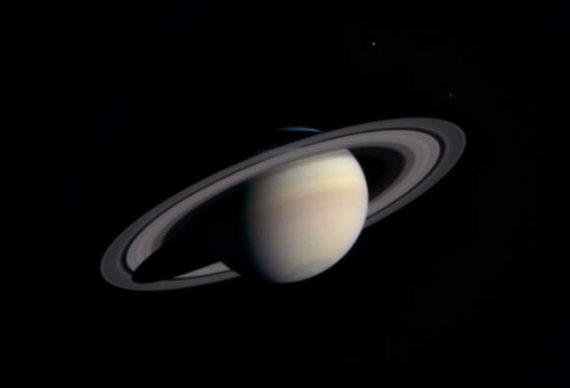

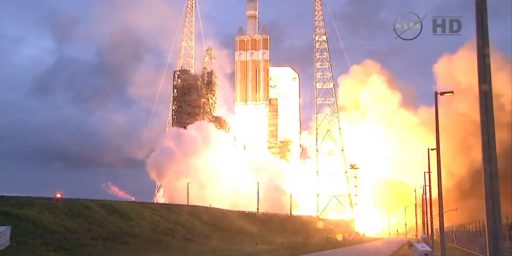
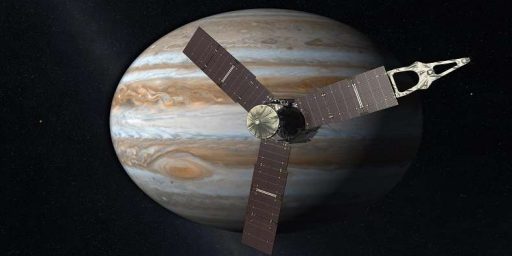
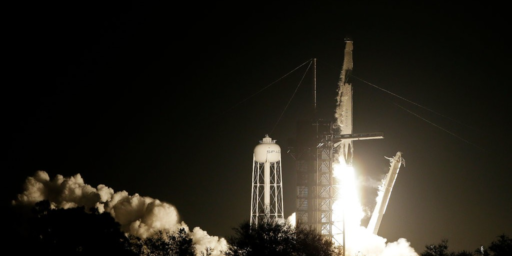
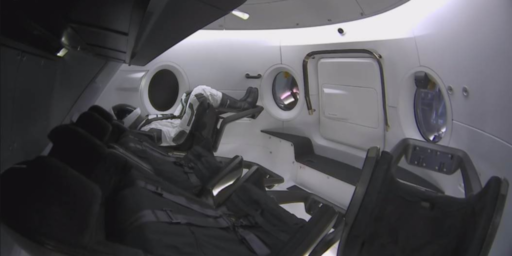
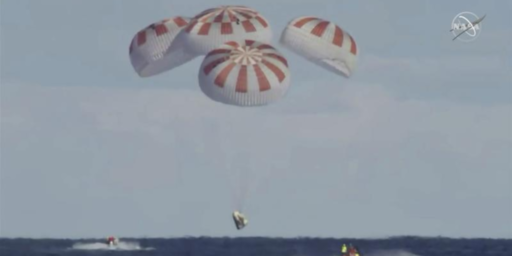
I must admit feeling no small amount of emotion as I think of this incredible spacecraft and all the people that supported its mission and all it helped us discover, and of how it kept on until the very end, finally becoming one with the planet that defined its purpose and was its orbital home for so long.
So long, and thanks for all the photos.
I was SO hoping that the last photo would have a black monolith in it somewhere…
An important reminder that what makes America great has nothing to do with stupid red hats.
@Not the IT Dept.: Well, my Cincinatti Reds cap? Come on.
Only if you’ve owned it for at least ten years.
Good night, sweet prince.